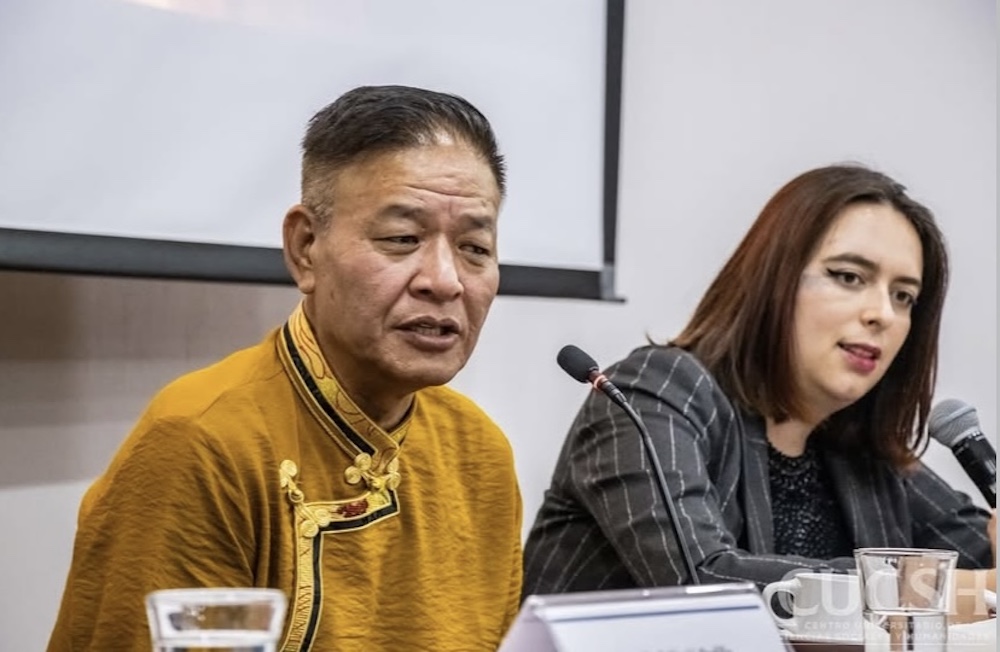EXPOSED: A man arrested by police was not — as he claimed — a Buddhist monk, but rather a Nepalese who has been working illegally in this country for two years
By Jimmy Chuang
An official of the Mongolian and Tibetan Affairs Commission said yesterday that a man who claimed to be a Tibetan lama when he was arrested Thursday for soliciting a prostitute is actually an illegal migrant from Nepal.
The 31-year old man, later identified as Sudesh Subba, was detained Thursday morning by the Taipei City Police Criminal Investigation Division for visiting and “doing business” with a Chinese prostitute at a brothel in Sanchung, Taipei County.
The man claimed to be a “Tashi Lama” and showed the police a photo-identification card issued by the Tibet Association of the Republic of China.
Since he insisted that he could not speak any Mandarin, the police asked for help from the commission.
Jamyang Gyalpsen (嘉揚見粲), an official with the commission’s Tibetan Affairs Department, helped police interrogate the man.
“This guy is definitely not a Tibetan because he could not speak any Tibetan at all,” Gyalpsen said.
By Thursday night, the police discovered the man’s true identity. They said Subba illegally entered the country two years ago and had been using fake identification cards to work.
He was sent yesterday to the Sanhsia’s Detention Center, which is a holding center for illegal immigrants, to await deportation.
The police also discovered that the real Tashi Lama left the country on May 1.
“Tibetan Buddhism is divided into five divisions. However, a real Tibetan monk must follow certain rules, including not having sex,” Gyalpsen said.
The five schools or sects are the Gelug, Nyingma, Sakya, Kagyu and Bon, which are sometimes referred to in Taiwan by colors or objects — yellow, red, flower, white and black, respectively.
The Nyingma and Sakya sects allow their members to marry, Gyalpsen said, adding that the sect’s members do not have to be monks.
As for the title “lama,” Gyalpsen explained that it is actually an exclusive title for senior and high-ranking monks who are qualified to be mentors or instructors for other monks.
“Chaba” is actually the title used for the majority of monks.
“As for the Nepalese, as far as I know, many have `lama’ as part of their last names but it does not mean they are real lamas or Tibetan monks,” Gyalpsen said.
“Such Nepalese `lamas’ have nothing to do with real lamas,” he said.
“Most people in Taiwan do not understand the region [Tibet] or its religion, so many criminals take advantage of this to carry out their illegal deals,” he said.









